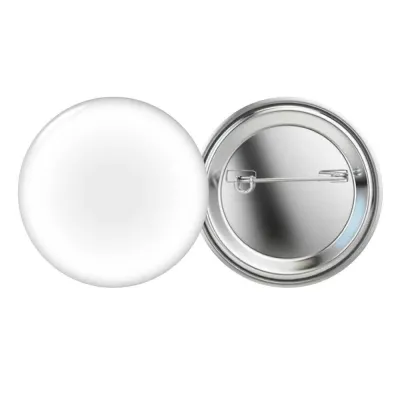Meaning of Colors in Flag of Uganda
Meaning of Colors in Flag of Uganda

The national flag of Uganda, like many others, is more than just a piece of fabric with colors. It embodies the rich history, cultural heritage, and aspirations of its people. With its vibrant hues and distinctive design, the Ugandan flag holds deep symbolism that reflects the nation's journey and values. In this blog, we delve into the meaning behind each color of the Uganda flag, exploring its significance and the historical context that shaped it.
Origins of the Uganda Flag
Before delving into the meaning of its colors, let's briefly explore the origins of the Uganda flag. The current design was adopted on October 9, 1962, upon Uganda's attainment of independence from British colonial rule. Crafted by the colonial authorities, the flag underwent several iterations before the final version was approved. Today, it serves as a powerful symbol of national unity and identity.
Design
The design process for the Uganda flag was marked by deliberation and collaboration. The committee considered various proposals and consulted with experts in heraldry and vexillology to ensure that the final design would be both meaningful and visually striking. After several iterations, a consensus was reached on the current design, which features horizontal stripes of black, yellow, and red, with a national emblem at the center.
Symbolism of the Flag
The colors and symbols of the Uganda flag hold deep significance, reflecting the nation's history, culture, and aspirations. The black stripe represents the people of Uganda and their unity in diversity. The yellow stripe symbolizes the abundant natural resources and bright future of the nation. The red stripe represents the sacrifices made in the struggle for independence and the courage of the Ugandan people.
Black - Strength and Unity
At the center of the Uganda flag lies a bold black stripe, stretching horizontally across the fabric. Black, often associated with strength and resilience, holds profound significance in Ugandan culture. It symbolizes the people's collective struggles and triumphs throughout history. Additionally, black represents the unity of Uganda's diverse ethnic groups, reminding citizens of the strength found in solidarity despite differences.
Yellow - Sunshine and Hope
Adjacent to the black stripe, a bright yellow band radiates warmth and optimism. Yellow embodies the sun's golden rays, signifying hope, prosperity, and a bright future for Uganda. The color reflects the nation's abundant natural resources, fertile lands, and potential for growth and development. Furthermore, yellow evokes the spirit of optimism that fueled Uganda's journey towards independence and continues to inspire its people today.
Red - Courage and Sacrifice
Completing the trio of colors is a bold red stripe, symbolizing courage, sacrifice, and the blood shed for freedom. Red serves as a reminder of the sacrifices made by Ugandan heroes and heroines in the struggle against colonial oppression and injustice. It represents the resilience and determination of the Ugandan people to overcome adversity and build a better nation. Moreover, red embodies the passion and vitality that characterize Uganda's vibrant culture and society.
National Emblem
At the center of the Uganda flag lies the national emblem, which features a depiction of the crested crane, the national bird of Uganda. The crested crane is a majestic and graceful bird, known for its distinctive golden crest and elegant plumage. It symbolizes freedom, vigilance, and dignity, qualities that resonate deeply with the aspirations of the Ugandan people.
The crested crane is depicted standing on one leg, with its beak turned towards the sky, symbolizing Uganda's upward trajectory towards progress and prosperity. The bird is surrounded by a circular arrangement of spears and a traditional drum, representing Uganda's rich cultural heritage and the strength of its people.
Certainly, let's delve deeper into the symbolism and design elements of the Uganda flag, exploring its colors, emblems, and historical significance.
Symbolism of Colors:
Black: The black stripe on the Uganda flag represents the people of Uganda, reflecting the unity and solidarity of its diverse population. It symbolizes the strength and resilience of the Ugandan people in the face of challenges and adversity.
Yellow: The yellow band symbolizes the abundant natural resources and bright future of Uganda. It represents the country's potential for prosperity, growth, and development. Yellow also evokes the warmth of the Ugandan sun and the optimism of its people.
Red: The red stripe embodies the sacrifices made in the struggle for independence and the blood shed by Ugandans in defense of their freedom and dignity. It symbolizes courage, determination, and the resilience of the Ugandan spirit.
National Emblem
At the center of the Uganda flag lies the national emblem, which features a depiction of the crested crane, the national bird of Uganda. The crested crane is a majestic and graceful bird, known for its distinctive golden crest and elegant plumage. It symbolizes freedom, vigilance, and dignity, qualities that resonate deeply with the aspirations of the Ugandan people.
The crested crane is depicted standing on one leg, with its beak turned towards the sky, symbolizing Uganda's upward trajectory towards progress and prosperity. The bird is surrounded by a circular arrangement of spears and a traditional drum, representing Uganda's rich cultural heritage and the strength of its people.
Motto
Beneath the national emblem is the country's motto, "For God and My Country," which reflects Uganda's commitment to faith, patriotism, and national unity. The motto emphasizes the importance of spiritual values and civic duty in the life of the nation, encouraging Ugandans to work together for the common good and the advancement of their country.
Adoption and Independence
The Uganda flag was officially adopted on October 9, 1962, the same day that Uganda gained independence from British colonial rule. The flag-raising ceremony was a momentous occasion, symbolizing the birth of a new nation and the culmination of years of struggle and sacrifice. Since then, the Uganda flag has served as a powerful emblem of national pride and identity, representing the hopes and aspirations of the Ugandan people.
Unity in Diversity
At its core, the Uganda flag encapsulates the principle of unity in diversity. The harmonious blending of black, yellow, and red symbolizes the coming together of Uganda's diverse ethnic, cultural, and religious communities. It reflects the nation's commitment to inclusivity, tolerance, and respect for all its citizens, regardless of their background or beliefs. By embracing diversity as a source of strength rather than division, Uganda can forge a more united and prosperous future for generations to come.
Continuity and Evolution
As Uganda continues to evolve and confront new challenges in the 21st century, the symbolism of its flag remains as relevant as ever. The colors that adorn the flag serve as a timeless reminder of the nation's past struggles and triumphs while pointing towards a future filled with promise and possibility. Whether in times of peace or turmoil, the Uganda flag stands as a beacon of hope and resilience, inspiring its people to work together towards a brighter tomorrow.
Conclusion
In conclusion, the Uganda flag is a powerful emblem of the nation's identity, history, and aspirations. Each color - black, yellow, and red - carries deep symbolism, reflecting Uganda's journey towards independence and its ongoing pursuit of unity, prosperity, and freedom. As Ugandans proudly raise their flag high, they celebrate not only their past achievements but also the promise of a brighter tomorrow, guided by the timeless values embodied in its vibrant hues.






















